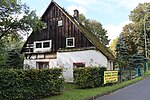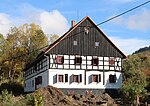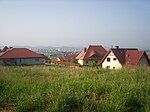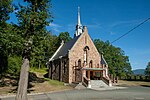Chrośnica, Lower Silesian Voivodeship
Lower Silesia geography stubsVillages in Karkonosze County

Chrośnica [xrɔɕˈnit͡sa] is a village in the administrative district of Gmina Jeżów Sudecki, within Karkonosze County, Lower Silesian Voivodeship, in south-western Poland.It lies approximately 6 km (4 mi) north-east of Jeżów Sudecki, 10 km (6 mi) north-east of Jelenia Góra, and 89 km (55 mi) west of the regional capital Wrocław.
Excerpt from the Wikipedia article Chrośnica, Lower Silesian Voivodeship (License: CC BY-SA 3.0, Authors, Images).Chrośnica, Lower Silesian Voivodeship
gmina Jeżów Sudecki
Geographical coordinates (GPS) Address Nearby Places Show on map
Geographical coordinates (GPS)
| Latitude | Longitude |
|---|---|
| N 50.976388888889 ° | E 15.793055555556 ° |
Address
58-500 gmina Jeżów Sudecki
Lower Silesian Voivodeship, Poland
Open on Google Maps







